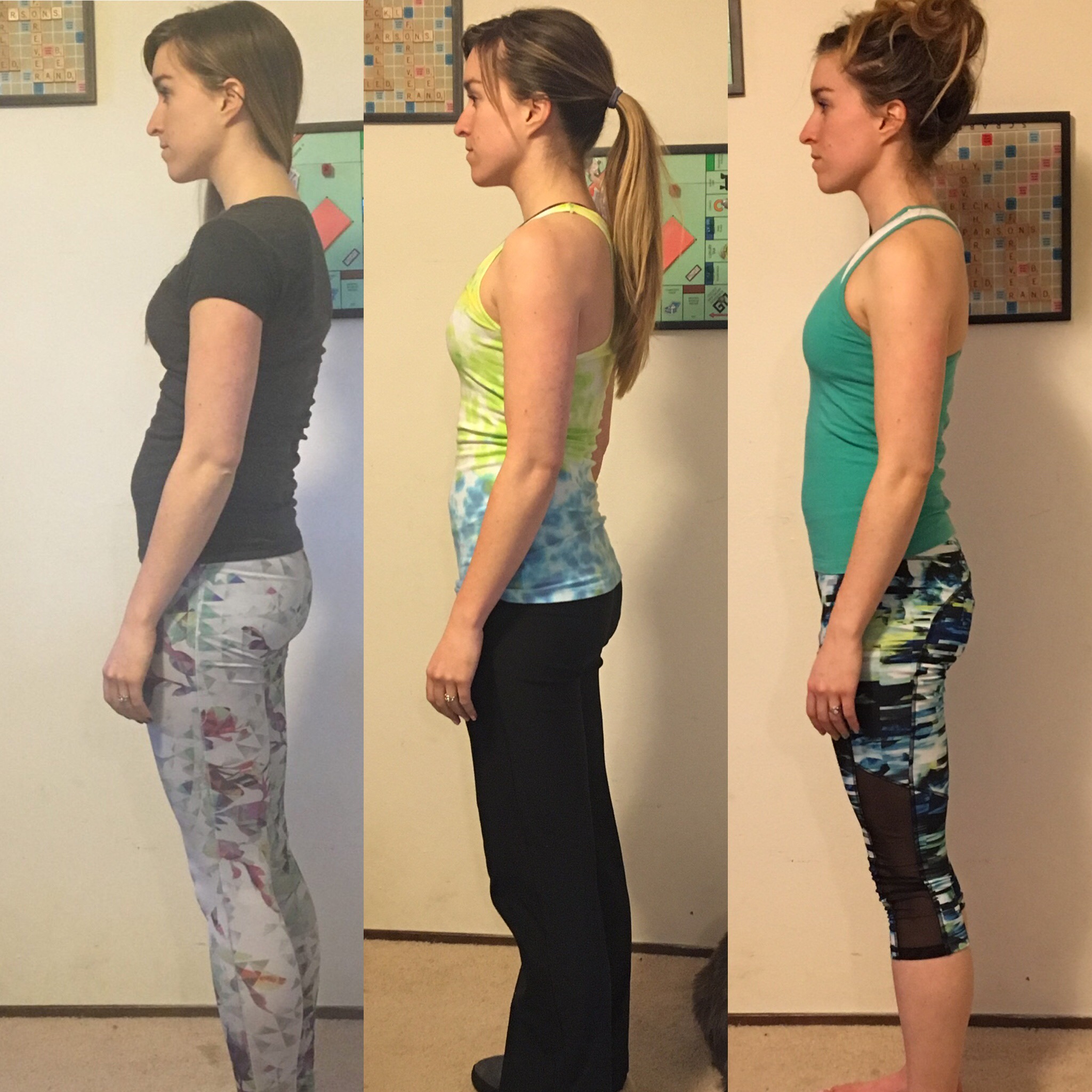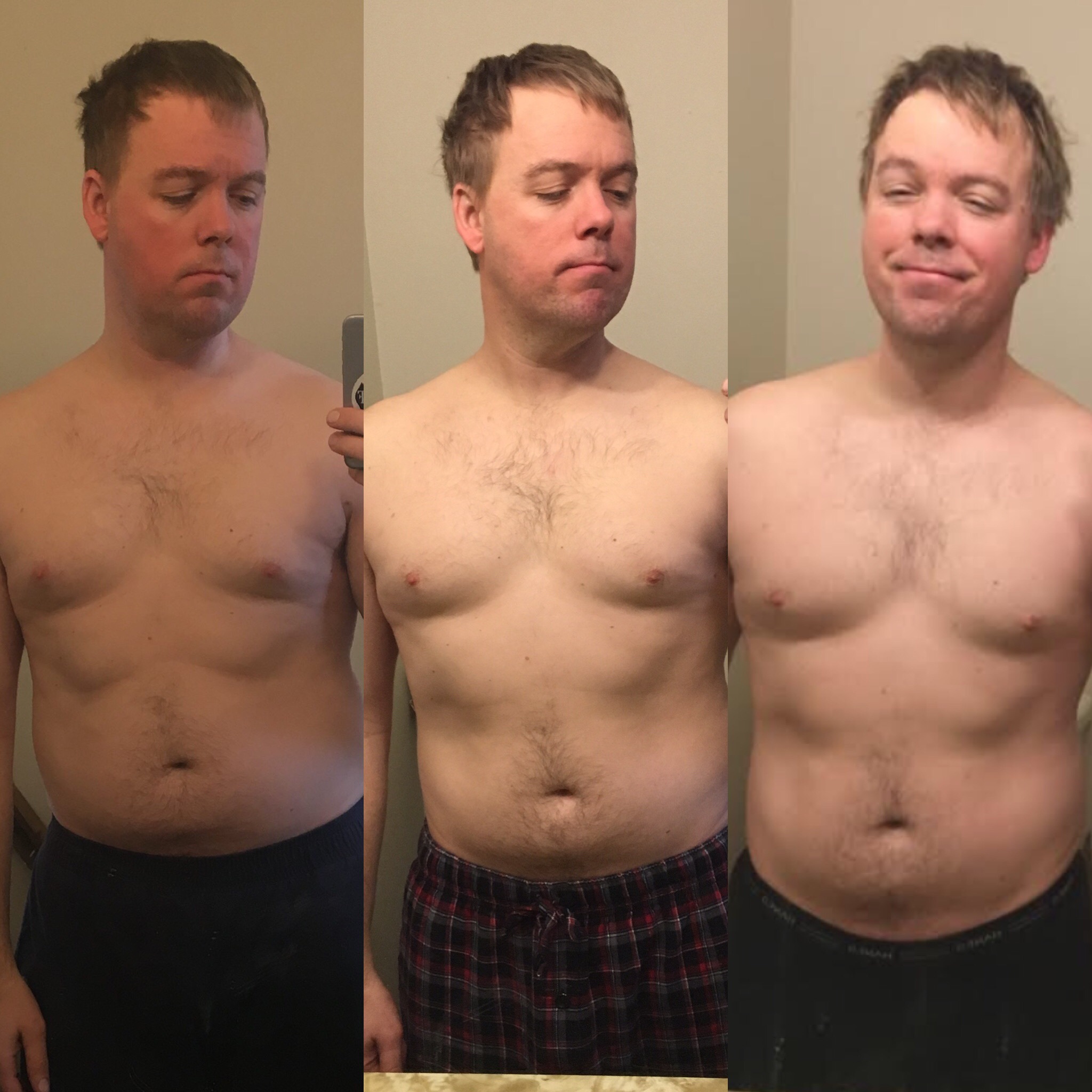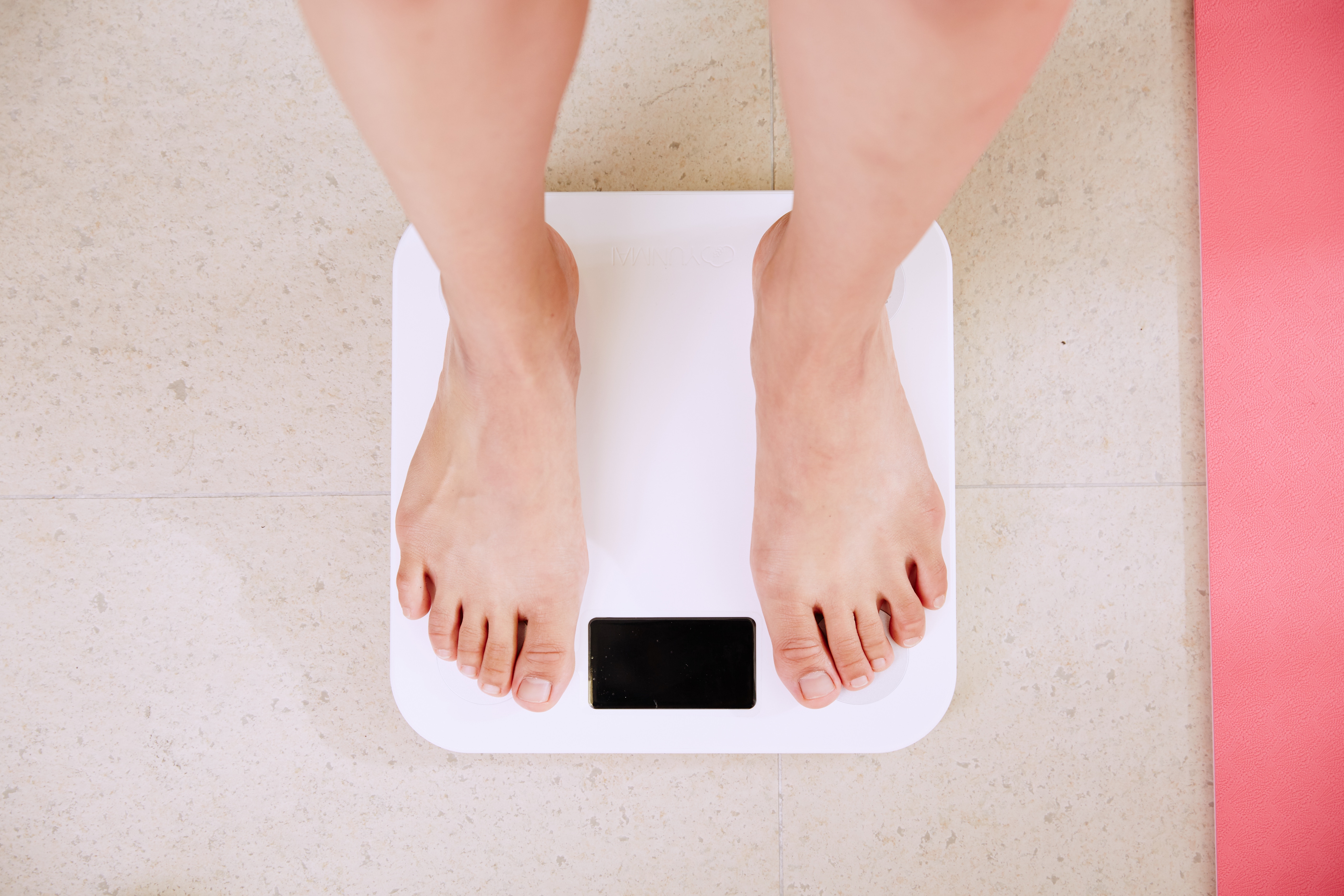Since my husband and I have met our wellness goals, we are not ready to watch our bodies creep back to where they were, but rather to maintain the progress we’ve made and go even further. How do we avoid becoming another statistic for weight regain or resume our couch-potatoing, Christmas cookie-eating ways? The vital keys to long-term success lie before and after the hard work of reaching your goals.
Key #1: Before you change anything
Decide carefully how you will achieve your goals. For many years, scientists have been studying methods for weight loss to find the “best” way to get pounds off. The surprising result of a lot of this research is that so many methods work. A lot of nutritionists have taken to saying, “diets don’t work.” It might be semantics but in general, if the goal is to lose weight – most fad diets do work. Whether it’s low carb, low fat, low calorie, or portion control – weight typically comes off.1-5 If they didn’t work at all for losing weight, word would get around pretty quickly and they would never become popular.
Here’s the kicker (besides that many fad diets aren’t safe): the statistics for maintaining weight loss after a diet are horrendous. Long-term studies show that five years after short-term diets the result is an average regain to anywhere from a net loss of only 6 lbs to a gain of 10-21% of pre-diet weight.2,6 Yikes!
Many fad diets can be extreme, overly restrictive, or just plain miserable (or option d, all of the above). Most people beginning a diet program are willing to commit to short-term pain for long-term gain. Unfortunately, the reality is that long-term dieting is generally not sustainable, and weight loss from short-term dieting is temporary.
But fear not – all hope is not lost! The National Weight Control Registry is comprised of people who have successfully lost at least 30 lbs and kept it off for at least a year, though most participants have lost an average of 72.6 lbs and kept it off for more than 5 years.7 Their participants report that ongoing, long-term participation in sustainable habit changes has been key to their success, as opposed to radical, short-term dieting. You can read more about their habit changes at the National Weight Control Registry website.
All these studies show that a pivotal ingredient for long-term success with wellness, weight loss, muscle gain, or any habit change is sustainability. One of my favorite quotes sums up the wisdom behind this:
“Begin as you mean to go on, and go on as you began, and let the Lord be all in all to you.”
-Charles H. Spurgeon
Some may wonder what the last phrase has to do with wellness, and personally I believe it is vitally important (and apparently so did Spurgeon since he tacked it on there), so I included it. Regardless of how you feel about God, however, the sentiment is to not even begin a habit change that you can’t commit to long-term. Find changes that work with your lifestyle, not against it.
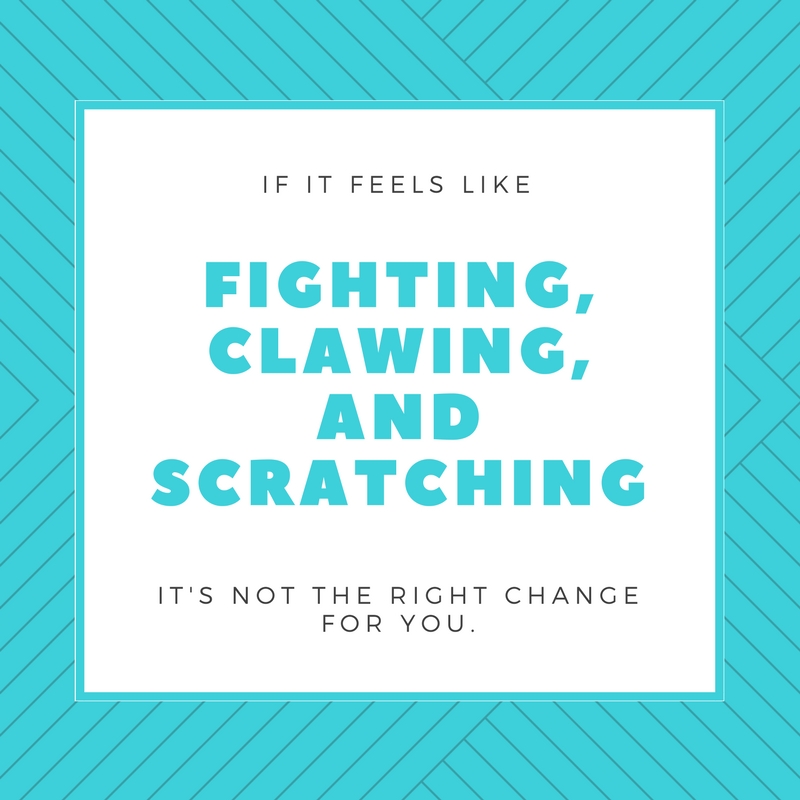
Recognize that temporary habit changes create temporary results. You can tweak them, change them, or adjust to the fluidity of life as needed, but if your habit changes disappear completely, so will the fruits of your labors.
Key #2: After you’ve met your goals
You’ve done it, congratulations! You’ve met your goal! You’ve placed a new brick in the healthy foundation upon which you can continue building the life you want. Guess what? You’re not done! If you want to continue to enjoy the benefits of your progress, you must grab hold of the second key to long-term success:
Always have a goal and a sustainable plan to achieve it.
Achieving a goal merits celebration, and also the exciting task of deciding what your next goal will be. It doesn’t have to be intense – your goal could be maintenance and your plan might be walking – but you need to have both or you’ll watch all your hard work and health benefits slip away. Living a healthy life is swimming upstream in our culture – you can not coast into good health.
So what’s next for Charlie and me?
My new goal: Maintain cardiovascular endurance and flexibility. Gain strength and muscular endurance (I want to be able to do 10 pull-ups or rock climb for an hour without getting pooped).
My new plan: Mindful, intuitive eating along with 30-40 minutes of cardio twice weekly, strength training 4 times weekly, and 10-20 minutes of yoga 5 days per week.
Charlie’s new goal: Maintain cardiovascular endurance and flexibility. Gain strength (he wants to be able to save people from burning buildings and stuff).
Charlie’s new plan: My Fitness Pal (with his calorie and macronutrient needs adjusted since he’s building muscle now), 30-40 minutes of cardio twice weekly, strength training 4 days per week, and 10-15 minutes of yoga before each workout as well as a longer practice twice weekly.
Have a goal of your own but need help finding a sustainable plan that fits your lifestyle? Contact me or schedule an appointment to start building a healthy foundation for the life you want!
- https://academic.oup.com/jcem/article-lookup/doi/10.1210/jc.2002-021480
- http://onlinelibrary.wiley.com/doi/10.1038/oby.2001.134/full
- http://jamanetwork.com/journals/jamainternalmedicine/fullarticle/412650
- http://onlinelibrary.wiley.com/doi/10.1038/oby.2004.61/full
- http://ajcn.nutrition.org/content/53/5/1124.short
- http://europepmc.org/abstract/med/2613427, http://ajcn.nutrition.org/content/74/5/579.short
- http://ajcn.nutrition.org/content/82/1/222S.short
Our three months on the Goal-Getter Package is complete! The Goal-Getter package is a package I provide that is designed to help my clients meet 3-month health and wellness goals. Since my husband and I both had goals for the New Year, we each started our own Goal-Getter package and we’ve been sharing the journey with you. Click here to read about it from the beginning. The common cold ran rampant through our house during the time we were supposed to complete our post-program assessment, so we’re a tad late, but here it is!
Did we achieve our goals? How far did we come? The Goal-Getter package includes pre- and post-measurements of body composition and cardiovascular health, muscular endurance, and flexibility. Read on to see how ours changed in the last 3 months!
Becki
| January 2017 | March 2017 | |
| Resting pulse | Elevated | Normal |
| Resting BP | Elevated | Normal |
| Weight | +7 lbs from my usual | +0-3 from my usual (fluctuates) |
| Body Mass Index | Normal | Normal |
| Waist-to-hip Ratio | Low risk | Low risk |
| Body fat % | Average | Average |
| Cardiovascular fitness | Fair | Good |
| Muscular endurance (push-up) | Very Good | Very Good |
| Muscular endurance (curl-up) | Excellent | Excellent |
| Flexibility | Good | Very Good |
Goal #1: Lose 7 lbs to return to my usual body weight
• Use my daily food group checklist to stay within recommendations and get enough food from each food group each day.
How I did: For the first two months, the food group checklists worked well and I (mostly) stuck to using them. I lost 5 of the 7 lbs in the first month and then stalled out for month 2. To make sure I wasn’t inadvertently missing my nutritional goals with the food group checklists (which, by nature, are not as detailed as complete tracking), I started using My Fitness Pal to track my intakes for the last month. I also conceded that it’s possible my body just wasn’t going to lost the last two pounds – it has been about a year or two since I’ve weighed that much. As it turns out, I lost somewhere from 4-7 lbs total, as I’m noticing my weight tends to fluctuate about that much. I’m calling it a win!
Goals #2-3: Decrease resting heart rate and blood pressure to normal ranges and increase cardiovascular fitness from “fair” to “good”
• Complete 40-60 minutes of cardiovascular exercise (heart rate 115-155 bpm) 5 days per week
How I did: I’m most happy about achieving my goals with these numbers since they are important risk factors for cardiovascular disease! Doing the exercise was easier than I expected when I found the types of cardio I most enjoy. On rainy winter days, I have loved following cardio dance videos from Youtube…they are free and perfect for fitting your schedule in the comfort of your home. My standby favorite is The Fitness Marshall, but there are dozens of choices out there to spice it up with variety. As the weather improves, I’ll spend more time outside playing basketball, hiking, swimming, and kayaking. I definitely want to make sure to keep up these improvements!
Goal #4: Improve posture by stretching chest, hip flexors, and decreasing anterior pelvic tilt, while strengthening back muscles
• Complete tailored yoga practice 5 days per week and strength training program 2 days per week
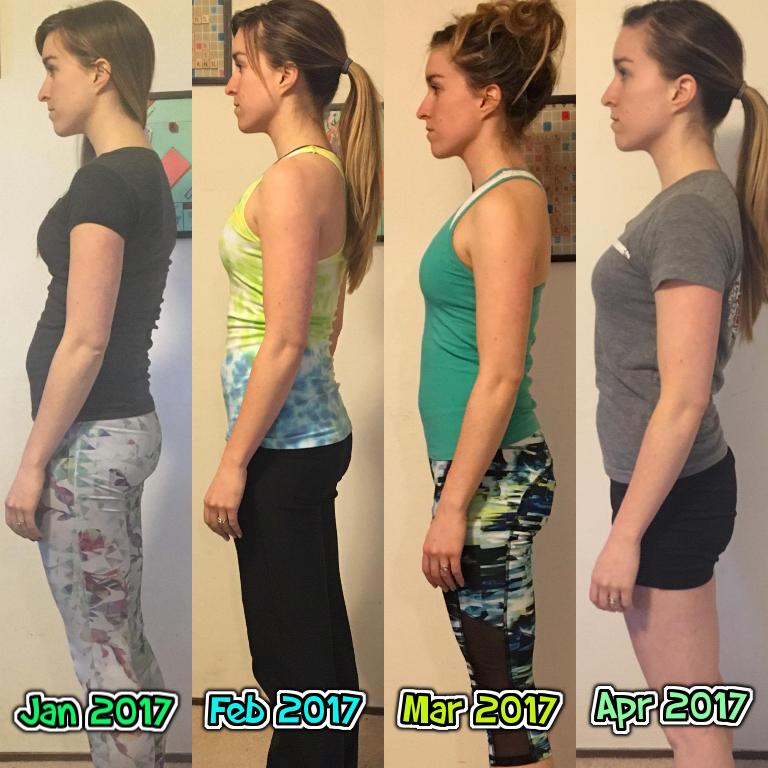
How I did: I was so impressed with the improvements in my posture! Yoga has been rocking my posture world. My chest, back, and hips feel so fluid and you can see the difference throughout the three months in my progress photo. Check out this video for a couple of easy exercises you can do to work on your posture. My flexibility assessment also improved! It is amazing how much movement we lock up when we sit too much and don’t move. I definitely have work to do still in my chest and shoulders, which are stubbornly remaining tight, so that’s next on my list!
Charlie
| January 2017 | March 2017 | |
| Resting pulse | Normal | Normal |
| Resting BP | Normal | Normal |
| Weight | +15 lbs from his usual | +0 lbs from his usual |
| Body Mass Index | Overweight | Overweight (remember how BMI doesn’t account for muscle mass?) |
| Waist-to-hip Ratio | Low risk | Low risk |
| Body fat % | Poor | Fair |
| Cardiovascular fitness | Excellent | Excellent/Superior (right on the line) |
| Muscular endurance (push-up) | Good | Very Good |
| Muscular endurance (curl-up) | Excellent | Excellent |
| Flexibility | Good | Excellent |
Goal #1: Lose 20 lbs/Button wedding pants without “sucking it in”
• Track intakes with My Fitness Pal, aiming for goal of 2000 kcal per day.
How he did: He lost 15 lbs, so he didn’t quite hit the 20 lb goal but he did return to his previous normal body weight. His clothes fit, he has more energy, and he didn’t have to buy new pants! My Fitness Pal worked great for him, and he continues to use it to keep himself on track.
Oh, and check this out…
Helloooooooo, wedding pants! And lookin’ handsome…might be time for a date night!
Goal #2: Increase cardiovascular fitness from “Excellent” to “Superior”
• Follow the P90X workout program to do 60 minutes of exercise daily.
How he did: Charlie did great – and he bumped his cardiovascular endurance from “Excellent” to between “Excellent” and “Superior.” He’ll take it! Charlie nearly completed the P90X workout program, but reached a point where he was satisfied with his cardio and his weight, and opted to shift to a plan that involved more weight lifting about halfway through the last month. Charlie loves having more endurance and he feels great!
Goal #3: Improve flexibility from “Good” to “Excellent”
• Do some yoga each day.
How he did: Charlie ended up compromising on this goal to do yoga only 2-3 times per week since P90X incorporates stretching into every workout. Sometimes he did yoga more often, sometimes less, but he smashed his goal and can reach farther on the sit-and-reach box than I can now!
Overall, we had fun and are so excited about meeting our goals. If you’d like to meet some goals of your own, give me a call at 360.358.3179 or schedule an appointment on my website! I would love to help you build the healthy foundation for the life you want!
Since I was a little stuck with progress on returning to my previously normal weight last month, I decided to start using a food tracker for the month of March just to make sure I wasn’t missing my nutrition goals accidentally. Food trackers can range anywhere from a pen and notebook to wearable devices that connect to apps and websites with huge searchable food databases. Tracking the food you eat has some major pros and major cons…and it’s important to understand both before deciding if (and what kind of) food tracking is right for you.
Pros:
- Accountability – The primary function of tracking is accountability for what you eat. By tracking, you can see what you have eaten compared to your recommendations, and keep yourself in check throughout the day. If you have a day that is “off the rails” you can easily see it, notice it, and adjust or monitor a little closer in the coming days (by the way, you don’t have to feel guilty – that’s not the point!).
- Awareness – Tracking causes you to pay more attention to the actual contents of what you eat. Websites, apps, and food labels all provide information on calories, fat, saturated fat, carbohydrates, sodium, and protein – all of which may be useful depending on your health goals. Most of my clients find some surprises when they start tracking (I never knew that had so many calories and so much saturated fat! I thought that food was healthy!). Tracking offers a learning opportunity that will help support you in lifelong wellness as you learn which foods fit best in your plan.
- Convenience – One study found that those who used a smart phone tracking app that assisted with goal setting and behavior change were more likely to meet their goals and, in this case, lost more weight than those using paper and pen or a website to track.1
Cons:
- Tedium/Obsessiveness – Particularly for those who are not so detail-oriented (or those with a history of eating disorders), food trackers can be more of a hindrance than a help. Tracking every detail can become overwhelming and exhausting, and people who are overwhelmed and exhausted are less likely to make good health choices or reap the benefits of tracking. If you fit in these categories, you’ll likely find more benefit using strategies other than food tracking.
- Inaccuracy – Food trackers are only as good as their accuracy and the honesty of the person using them. If you’re going to track at all, commit to being thorough and including everything you eat or drink – don’t forget condiments, cooking oils, seasonings, and beverages! Studies have found paper-based and online food tracking to be equally accurate.2
- Lack of Evidence-Based Support and Resources – Two studies of food tracking apps discovered that most apps do not assist with evidence-based skills that promote success like problem-solving, stress reduction, and improving motivation.3, 4 If you’re using a tracker, be sure to seek out other support for these important areas.
Many people I work with find using a food tracker beneficial, but also grow weary of the “cons” listed above. I encourage them to consider being flexible in their use of food trackers. Often, one can glean the benefits of awareness and accountability by tracking a few days per week or one week per month, and those benefits will often carry over for the remainder of the time. If you decide to do this, set a concrete goal of what days or how many you will track (example: I will track Mondays, Wednesdays, and Saturdays or I will track the first week of every month).
If you’re looking for ideas for food trackers to try, consider My Fitness Pal, Lose It, or Google “food journal” if you prefer pen and paper.
- http://www.jmir.org/2013/4/e32/?
- http://www.andjrnl.org/article/S2212-2672(14)01219-2/abstract
- http://www.ajpmonline.org/article/S0749-3797(13)00426-1/abstract?cc=y=
- https://link.springer.com/article/10.1007/s13142-011-0076-5
Wanting to live a healthier lifestyle but finding it tricky to cook more at home on your tight schedule? Check out this tip for making food prep easier and more efficient.
Want a Quick Slice of your own? Visit this website to order one!
Disclaimer: I do not receive any sponsorship or compensation from Pampered Chef.
My husband and I are two months in to goal-getting! Here’s an update on how we’re doing:
Becki
Goal #1: Lose 7 lbs to return to my usual body weight
- Use my daily food group checklist to stay within recommendations and get enough food from each food group each day.
How I’m doing: As you may have read in this post, I put on about 3 lbs throughout this month and I have since lost them again. So overall, this month has been basically a wash as far as weight and I’m still about 1.8 lbs above my previous normal. I’m thinking a couple things: 1) I may switch temporarily to a more detailed form of tracking intakes (like My Fitness Pal), just to make sure I’m not missing my goals without realizing it. 2) My body may be happy at this new weight. I won’t try to force it, and my weight is in a healthy range and not negatively affecting my health. If it doesn’t want to go down any more, that’s okay with me!
Goals #2-3: Decrease resting heart rate and blood pressure to normal ranges and increase cardiovascular fitness from “fair” to “good”
- Complete 40-60 minutes of cardiovascular exercise (heart rate 115-155 bpm) 5 days per week
How I’m doing: Pretty well overall. I haven’t been missing days, but I’ve had a couple of days of workouts that have been cut short by a tighter time schedule. I recently had my blood pressure checked and it was normal! Yippee! I can definitely tell that my cardiovascular fitness is improving because I’m having to increase the intensity of my workouts to hit my heart rate goals. Plus, I made it up and down “the stairs” 10 times the other day! I had hoped to do that by the end of the three months, but I hit that over a month early! I’m so happy with the
improvements in my cardiovascular fitness.
A few months ago, it snowed here and my family and I went out to have a snowball fight. I had only run around for a few minutes and my chest was tight and I was pooped. Three weeks ago it snowed again, and this time, I snowball fought with the best of them (my family is just a tad competitive) for 20-30 minutes with no trouble at all! That was very rewarding and a sign that I’m heading towards my “end game” of never having my fitness (or lack thereof) hold me back from anything I want to do.
Goal #4: Improve posture by stretching chest and hip flexors, and decreasing anterior pelvic tilt, while strengthening back muscles
- Complete tailored yoga practice 5 days per week and strength training program 2 days per week
How I’m doing: I’ve been consistent with my yoga and I’ve been also completing some yoga challenges on Instagram that have been a fun addition to my normal practice.
My before-and-after pictures were really fun this month! I noticed primarily a HUGE difference in the position of my shoulders between February and March. Look how much less rounded they are! I’m so pleased with that. You can also see that each month my back is slightly less arched and my pelvis is slightly less tilted forward. It’s so crazy how you don’t notice the differences in your posture until you line the pictures up side by side.
Charlie
Goal #1: Lose 20 lbs/Button wedding pants without “sucking it in”
• Track intakes with My Fitness Pal, aiming for goal of 2000 kcal per day.
How he’s doing: Charlie continues to track every day. He finds it gets easier as time goes on to stick with using the app to track. It became a habit for him and he never forgets. Occasionally he intentionally decides to eat more than his caloric goal, but it is not very often and he still tracks it for awareness, accountability, and consistency. Tracking is definitely not right for everyone, but it’s working for him. He lost another 4 pounds this month for a grand total of 14 pounds. He hasn’t tried the pants yet – he’s saving those for the end of the goal-getter package!
Can you tell he had just woken up in the last photo? Haha!
Goal #2: Increase cardiovascular fitness from “Excellent” to “Superior”
• Follow the P90X workout program to do 60 minutes of exercise daily.
How he’s doing: He is doing well and staying consistent, but definitely ready for the P90X program to be over. He is finding the P90X videos to be very time-consuming and don’t leave enough extra time for other activities like weight lifting.
Goal #3: Improve flexibility from “Good” to “Excellent”
• Do some yoga each day.
How he’s doing: Charlie has compromised to doing yoga three times weekly, and says his flexibility is WAY better than it used to be, which makes him feel better all the time and improves his workouts, posture, and the feel of his joints.
We’ve got one more month of our goal-getter package before we run all of the fitness and body composition testing again to see how far we’ve come! Check back to see how we did!
Want help meeting your own goals? Visit www.impowerednf.com for more information about meeting with me to set up your wellness plan!
I hear this from clients all the time: “It doesn’t matter what I do! My weight goes up and down and up and down. I’ll lose a few pounds and then I’ll gain two back and I just want to give up.”
Ahhh the scale…a mean mistress. It’s a rare person who has not noticed that, whether trying to lose weight or not, his or her number on the scale tends to fluctuate. This is true for just about everyone for a variety of reasons.
If you’ve been tracking my goal-getting journey, you know that one of my goals was to get back to my normal body weight by losing 7 lbs. If you haven’t been following along, well…now you know. So the first 4-5 came off in the first month or so. After that, things slowed to a screeching halt and began climbing…1 pound, 2 pounds, 3 pounds. I was sticking with my nutrition and workout goals for the most part, but it was still climbing.
How could this be, you ask? It’s actually very common. Read on and I’ll run you through a few reasons that your weight is not the “end all, be all”…or even necessarily a good way to measure your overall progress. It’s part of the equation, and it is certainly linked to health outcomes, but it does not warrant or deserve the intense focus we tend to put on it. Here are 7 reasons your weight may fluctuate that have nothing to do with eating too much or not exercising enough:
- Time of the day – Believe it or not our weight changes, sometimes pretty significantly, throughout the day. During the day we retain some of the water we consume, so we tend to weigh the most at the end of the day and the least first thing in the morning after we’ve used the bathroom. I have a pretty small frame and depending on the day I’ve clocked as high as a 4-5 pound difference from morning to evening.
- Hydration – Along the same lines as #1, the amount of water we drink during the day can affect our weights. On a day where we are sweating heavily or not drinking enough fluids, we will weigh less than a day where we are adequately hydrated.
- Bathroom/food status – Gross but true. If you haven’t had a bowel movement in 1-2 days, your bowels may contain at least a couple of pounds (sometimes more!) of fecal material. Your bladder can hold anywhere from .5 to 1.5 lbs of urine as well.
- Menstruation – Sorry ladies, but it can’t be helped. Most women retain at least an extra pound or two of fluid during menstruation.
- Fluid retention/swelling – This can be caused by many different things, but in healthy people it is most commonly due to high sodium intakes. Have you ever noticed that your pants don’t fit quite right or your fingers look like sausages the day after the Superbowl party? Sodium and water are friends, so when we eat a lot of sodium, our body hangs on to extra water for a day or two.
- Stress – In general, stress tends to make our bodies want to gain fat. Stress management is a very key component of overall health.
- Muscle/fat – Most of us have heard the adage, “Muscle weighs more than fat.” It’s true, and it’s also true that if you start a new exercise program you will be gaining some muscle as you lose fat so progress can be tricky to track. Be careful with this one though, because you usually won’t be gaining enough muscle to really affect your weight for the first month or two of a new exercise program.
For these reasons, I try to encourage (and beg and plead) clients to focus on their overall health and fitness, their habits, and how they feel, as well as assessments like weight, circumference, or body fat to assess their overall progress. Given the things listed above, going up a pound or a few every so often is normal and should be expected. Don’t let it stress you out or discourage you! If you feel like you’re likely to quit on improving your health if the scale goes up, I have a strong recommendation for you – don’t get on the scale!
You Might Also Like

Diet culture is determined to tell you that you have to be miserable to be healthy.
That couldn’t be more wrong.
Subscribe to learn how to go from a frustrated, restricted dieter to a happy, relaxed relationship with food and fitness. Healthy doesn’t have to be hard!

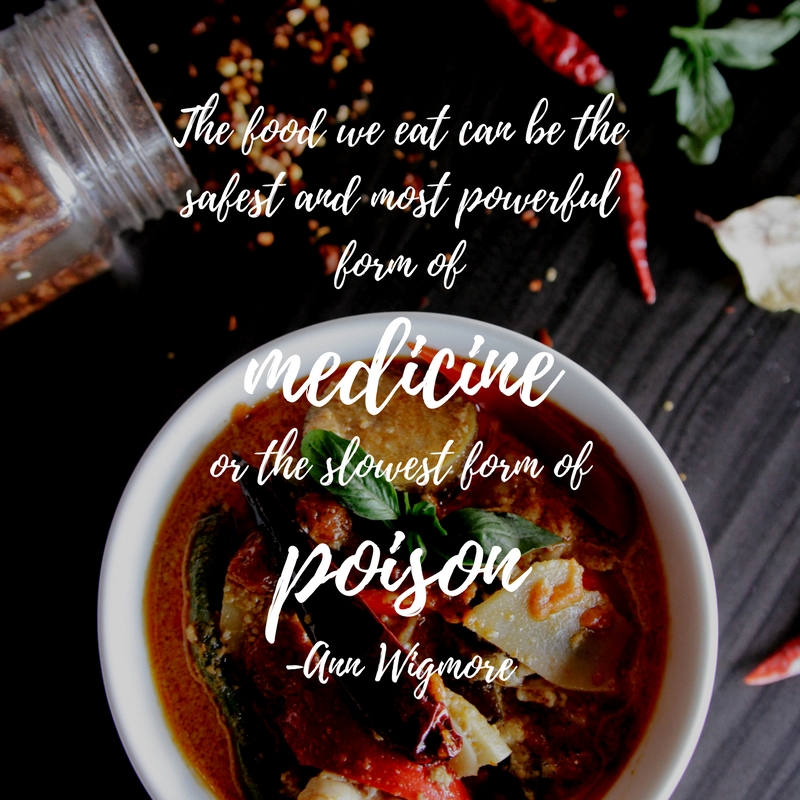
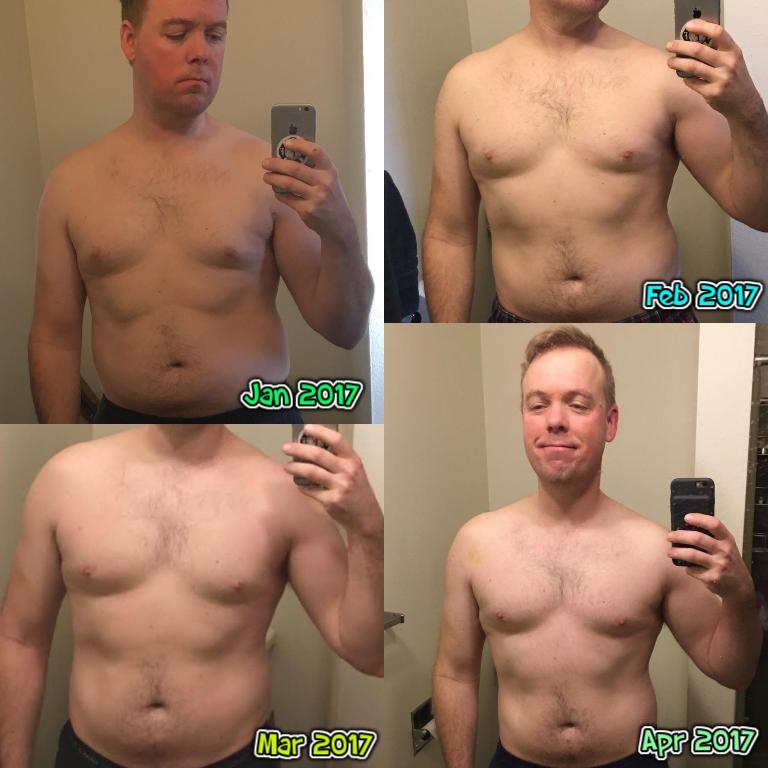
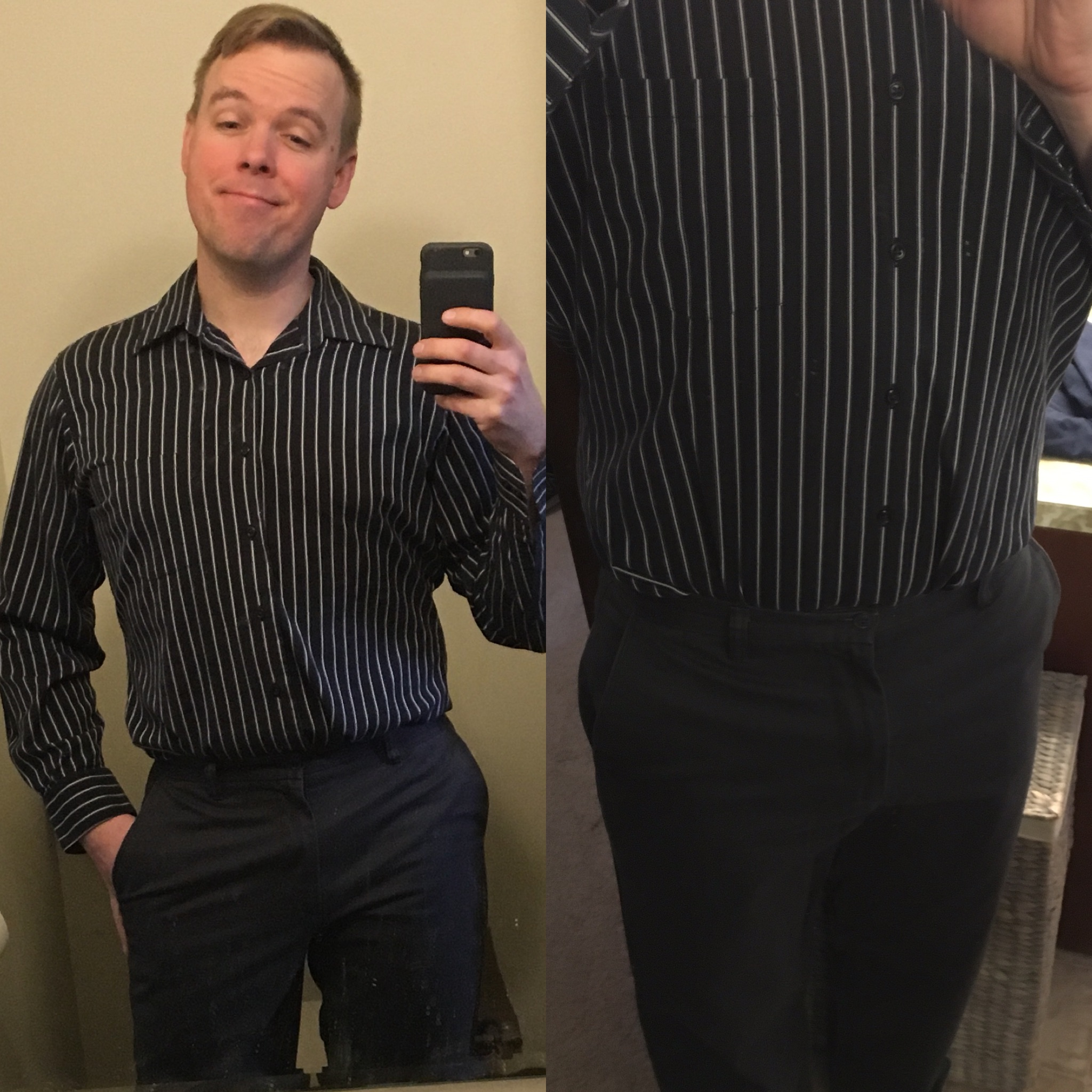

 improvements in my cardiovascular fitness.
improvements in my cardiovascular fitness.